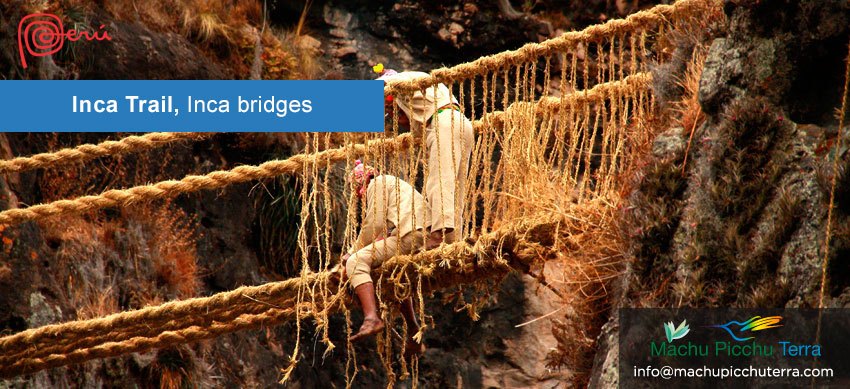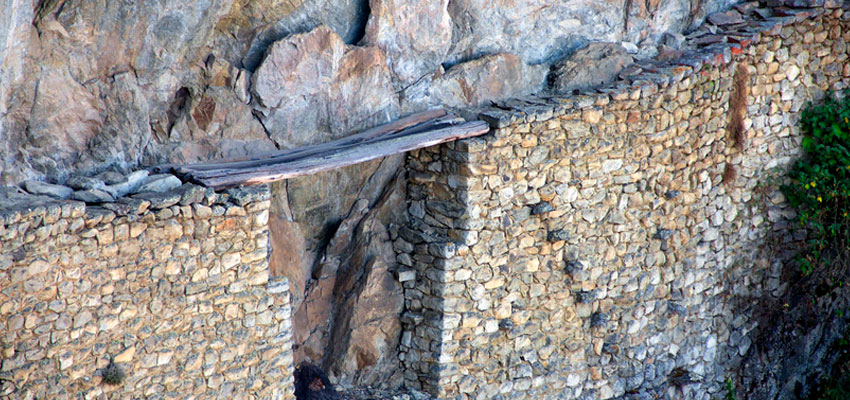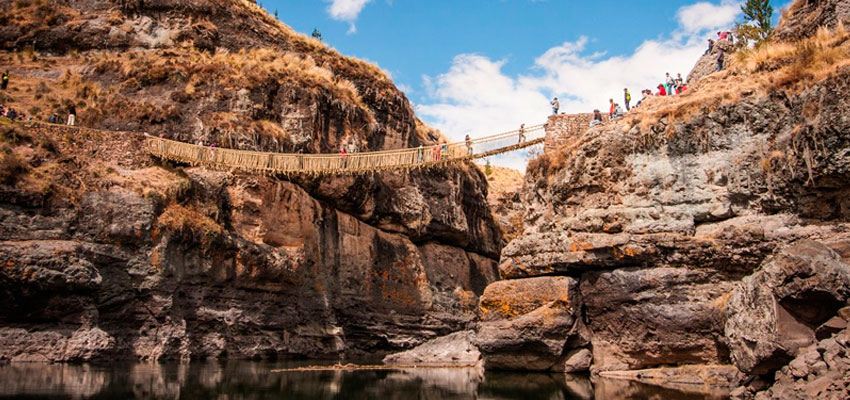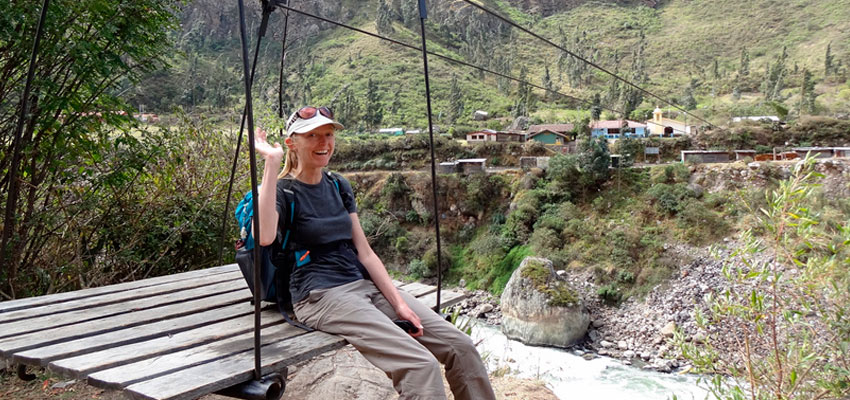
The Peruvian Andes are characterized by a mountainous relief, with high peaks, snow-capped mountains, deep canyons, mighty rivers, and abundant flora and fauna.
The Incas knew how to face this geography with an efficient road system, of which bridges were an important part.
The Inca bridges allowed a fast movement of people, and an efficient exchange of agricultural products, between different ecological levels, They incorporated 23,000 km. of roads, adapting to the topography, and around 200 bridges have been found in the Andes.
Inca Bridge Classes:
According to the type of construction and material, the bridges that existed on the Inca Trail were:
Log Bridge
They rested on two large stone stirrups, with solid foundations of worked stone, between each stirrup placed 2 to 4 logs, then crosswise crossed, other sticks tied with ropes made of straw, and stones and were ready for use.
Generally, these bridges were used for short, but equally dangerous, stretches, such as the Machu Picchu Bridge.

Inca Bridge – Inside the Inca City of Machu Picchu
Hanging bridges
They were built for distances of 50 to 60 meters, they were the longest bridges. They were bridges, very strong, several people could cross at the same time.
These bridges were made of ichu or straw ropes, duly worked and braided, which were attached to the stone abutments, which were built on each side of the bridge, at the same time, they put some ropes as railings, the ropes that would serve as a base for walking, were braided, as the weavers progressed, they were discarding the old bridge.

Q’eswachaka Suspension Bridge – On the Apurimac River
The Stone Bridges
They were used for short distances and had the same structure as the log bridges, but with stone slabs, on which it was no longer necessary to put anything else.
The Oroyas
It was a cable pulled from one side of the river to the other, tied tightly to trees, which served as pillars. A basket slid along the cable, supported by a wooden ring. Inside the basket, people or food could be transported.

The current version of La Oroya– On the Urubamba River
Floating Bridges
They built a kind of totora reed raft and then put a layer of earth on it so that it would float on the water.
Where can we see these bridges?
Currently, there are these types of bridges, whose construction has been passed down from generation to generation.
- This is how you have a log bridge in the Inca City of Machu Picchu.
- Floating bridges on the border of Puno with Bolivia over Lake Titicaca.
- At the entrance of Ollantaytambo on the Urubamba River you can see the foundations of what would have been a suspension bridge.
- An important Inca suspension bridge is the Q’eswachaka Bridge, located in the Department of Cusco, Province of Canas at 3,700 m. over the Apurimac River.
It is a suspension bridge, which is renewed every year by the Andean communities, with Inca technology.
It is a bridge woven with ichu (fodder), the farmers have 3 days, during which, men, women, and children collect a special ichu called “Qoya”, braid it, up to a thickness of 50 cm. and in the middle of songs and dances, they replace the old bridge, with the new woven while, the younger ones watch to maintain the tradition in the future.
This bridge is 28 meters long and 1.20 meters wide.
In 2013, the UN inscribed the knowledge and techniques used in this renovation on the Representative “List of the Intangible Cultural Heritage of Humanity”.
By Inca Trail Machu Picchu - Last updated, 01-03-2024
Interested in the Inca Trail? Know more about Archaeological sites!
- Archaeological sites in Cusco – ideal prior to the Inca Trail
- The most important sacred temples of Machu Picchu
- Short Inca Trail – What archaeological sites are visited?
- Huamanmarca or Wamanmarca archaeological site
- Qoriwayrachina archaeological site
- Runkurakay archaeological site
